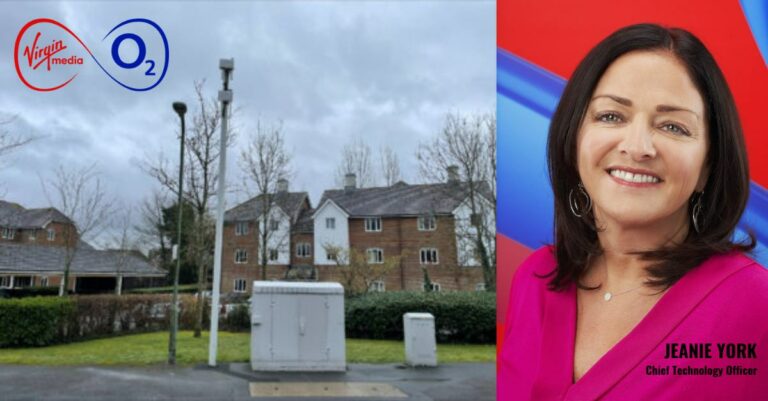Expanding Mobile Connectivity: Virgin Media O2’s Smart Poles
Virgin Media O2 has embarked on an ambitious project that is set to transform the UK’s mobile network landscape. By integrating cutting-edge smart poles with its extensive fibre network, the company aims to significantly enhance 4G and 5G coverage across the nation. This initiative not only represents a technological leap forward but also illustrates a strategic convergence of mobile and fixed network infrastructure, promising a slew of benefits for users and urban development alike.
A Leap Towards Enhanced Coverage with Smart Poles
At the core of this innovative approach are the smart poles, ingeniously designed to integrate seamlessly with Virgin Media O2‘s existing infrastructure. These poles, distinguished by their compact size compared to traditional cell towers, can be installed quickly and do not require the usual planning permissions. Powered by an advanced form of ‘digital electricity’, these smart poles draw their power directly from the fibre network, facilitating a streamlined and eco-friendly deployment process.
The Technology Behind Smart Poles
The smart poles utilize small cell technology to amplify the mobile network’s capacity, particularly in areas with high user density. This technology not only addresses the challenge of network congestion but also enhances the user experience by providing stronger and more reliable coverage. Furthermore, the use of digital electricity—a method of transmitting power over long distances through fibre optic cables—marks a significant innovation in powering telecommunications infrastructure without the need for traditional electrical connections.
Smart Poles: Catalysts for Smart City Development
Virgin Media O2’s vision extends beyond merely boosting mobile connectivity. The smart poles are envisioned as multifunctional pillars that could support a range of smart city applications. This includes the integration of electric vehicle (EV) charging stations, leveraging the company’s duct networks to facilitate a more sustainable urban mobility solution. Such multifunctionality not only underscores the potential for telecommunications networks to contribute to broader societal goals but also opens up new avenues for network monetization.
The Impact of Converged Network Capabilities
By deploying these smart poles, Virgin Media O2 demonstrates the power of leveraging its converged network—a synergy between its mobile and fibre network assets. This strategic approach simplifies the traditionally complex and time-consuming process of mobile network expansion. By utilizing the existing fibre network for both data backhaul and power supply, the company can bypass several logistical hurdles, such as obtaining separate power connections and navigating through the planning permission process.
Operational Efficiency and Environmental Benefits
The smart pole initiative represents a significant stride towards operational efficiency and environmental sustainability. The ability to deploy these poles rapidly and without the extensive groundwork typically required for traditional cell towers reduces environmental impact and urban disruption. Additionally, the use of digital electricity and the reliance on the existing fibre network minimize the need for new physical infrastructure, further underscoring the project’s green credentials.
Future-Proofing the Network
With approximately 25,000 street cabinets across the UK already connected to the National Grid, Virgin Media O2 is well-equipped to scale up this initiative. This infrastructure can be leveraged to meet the growing demand for mobile connectivity, especially in urban areas where space is at a premium. Furthermore, the adaptable nature of the smart poles means they can be easily upgraded or repurposed to accommodate future technological advancements, ensuring the network remains at the cutting edge of telecommunications technology.
A Vision for Tomorrow
Jeanie York, Chief Technology Officer at Virgin Media O2, has articulated a clear vision for the role of smart poles in the company’s network strategy. By harnessing the power of the company’s national fixed network for both backhaul and electricity, Virgin Media O2 is not just streamlining its operations but is also pioneering a model that could redefine mobile network deployment. The trial underscores the company’s commitment to innovation, customer satisfaction, and the development of infrastructure that supports the evolution towards smart cities.
The Road Ahead
As Virgin Media O2 continues to invest in and expand its network capabilities, the smart pole initiative is poised to play a pivotal role in shaping the future of mobile connectivity in the UK. By offering a solution that addresses both current and future connectivity needs, Virgin Media O2 is not only enhancing its network but is also contributing to the development of smarter, more sustainable urban environments.

































